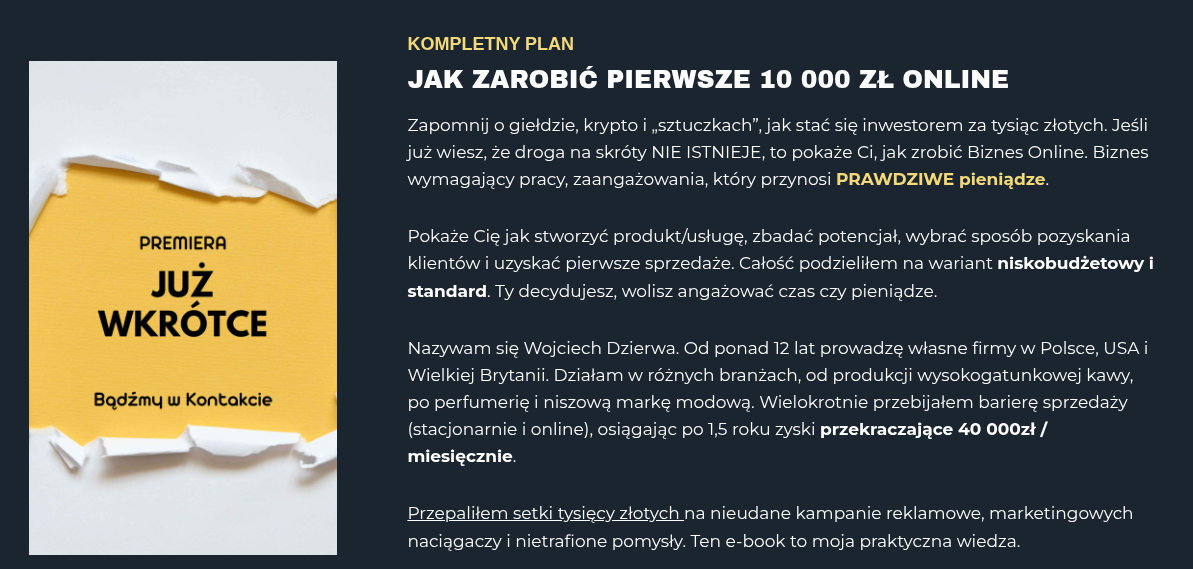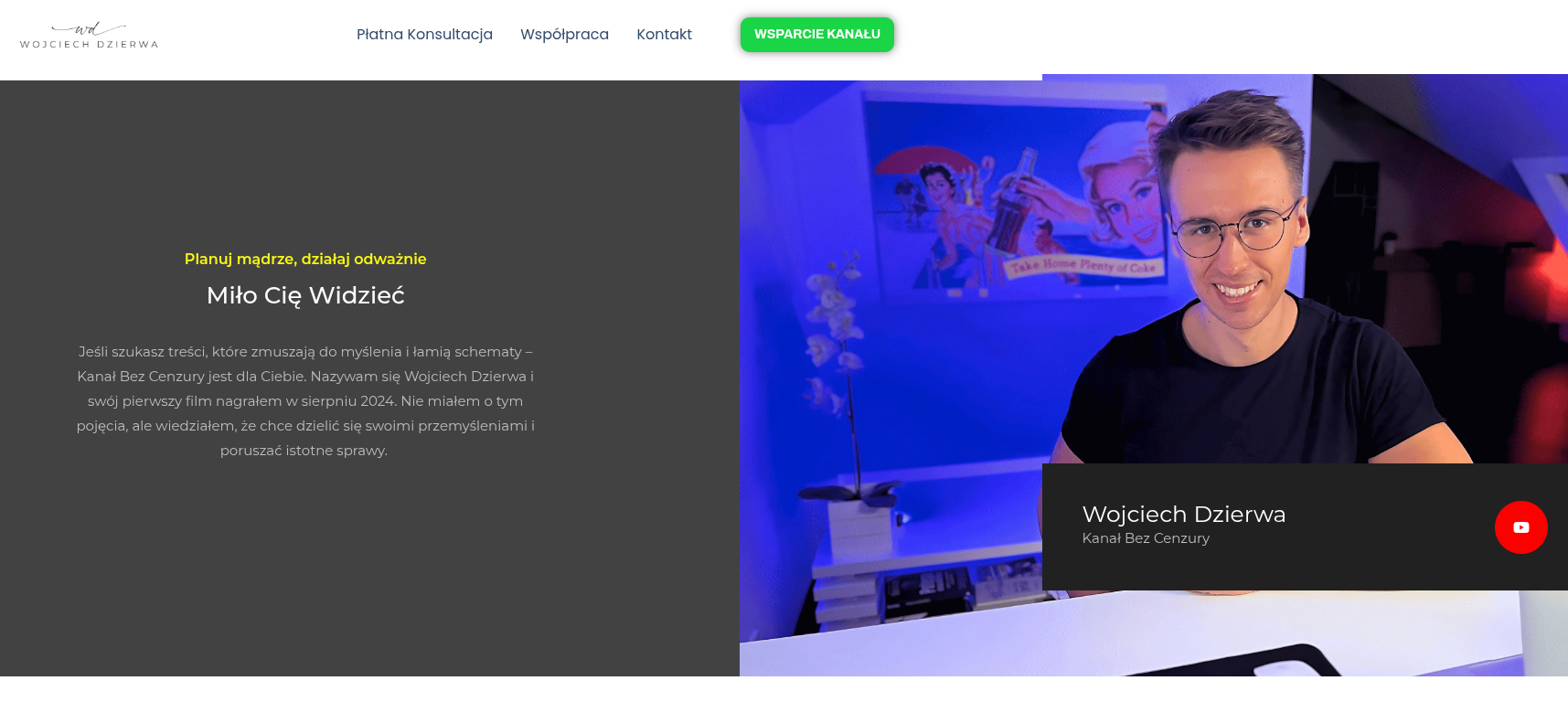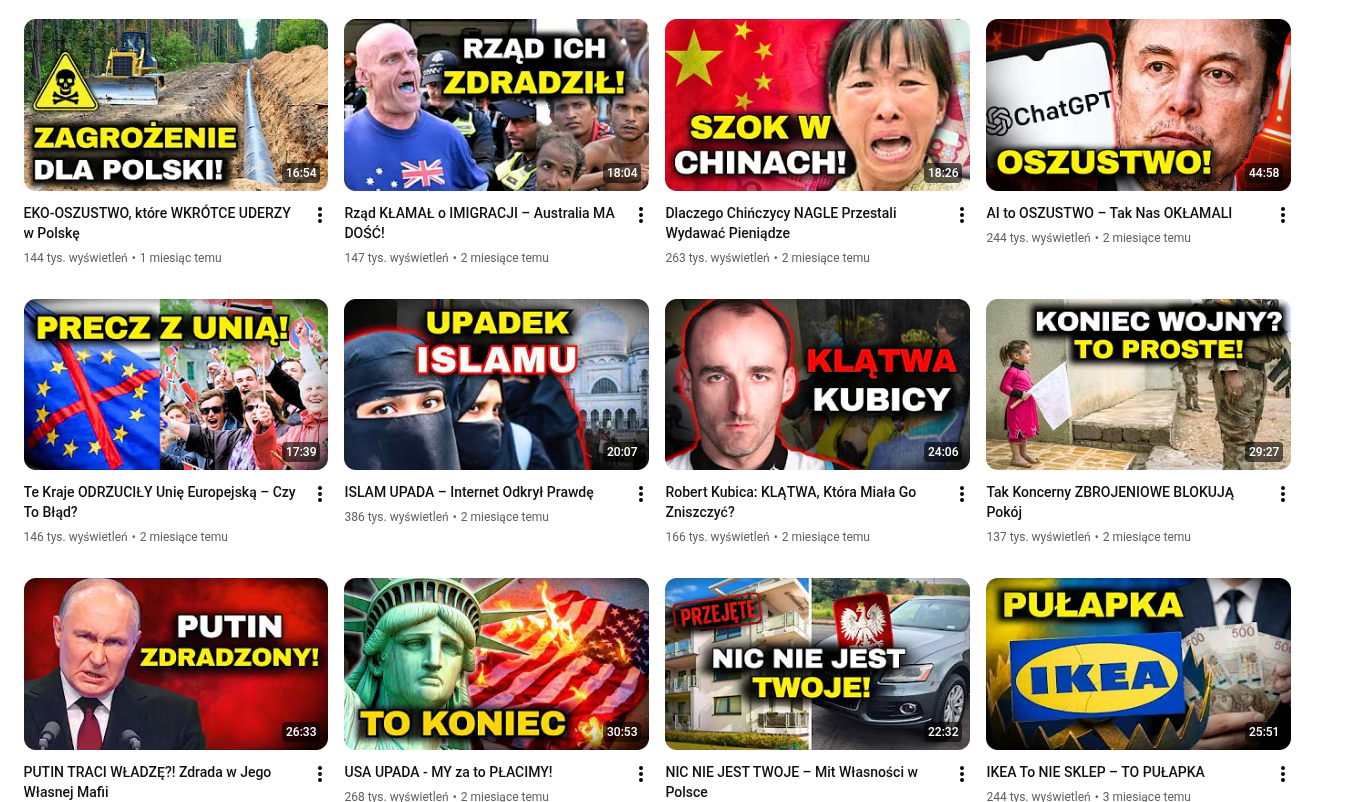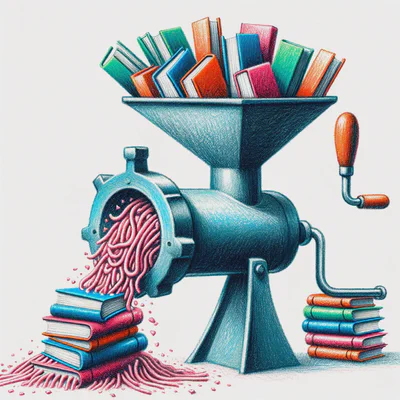An analysis of the phenomenon of Wojciech Dzierwa's 'Bez Cenzury' (Uncensored) channel. How to build a clickbait empire on YouTube using AI and SEO Heist techniques, generating millions of views on controversial content. The first part of an investigation.
Table of Contents
Nowadays, to use artificial intelligence as an extension of oneself, one must apply a bit of one’s own intelligence. Otherwise, it can end catastrophically for pseudo-creators. The recent case of Karolina Opolska, a journalist and lecturer positioning herself as an AI specialist, whose book on conspiracy theories turned out to be written by AI with a fabricated bibliography, is just the tip of the iceberg.
Most commentators miss two key problems. The first is plagiarism rooted in SEO Heist techniques, which involve taking over traffic for attractive phrases. The second is the incompetence of individuals who, as supposed AI experts, are training future professionals. But the real phenomenon of industrial-scale spam is happening where the layman doesn’t notice the manipulation – on YouTube.
Meet Wojciech Dzierwa, a man who, in less than a year, built a clickbait content empire, amassing hundreds of thousands of subscribers and millions of views. All thanks to AI, automation, and knowledge he should never have taught others.
From Junior to Spam King: The Evolution of Wojciech Dzierwa
Before the “Bez Cenzury” (Uncensored) channel was created, Wojciech Dzierwa tried his hand at being a marketing guru. My investigation, supported by digital evidence from internet archives, reveals a fascinating evolution – from a local website creator to the operator of one of the largest disinformation farms on Polish YouTube.
Phase 1: Uncensored Marketing and the Promise of Easy Money
In early 2024, the website wojciechdzierwa.pl looked completely different. It offered an e-book titled “How to Earn Your First 10,000 PLN Online.”

Dzierwa wrote about himself: “I burned hundreds of thousands of zlotys on failed advertising campaigns, marketing scammers, and bad ideas.” He also claimed to have been running companies in Poland, the USA, and the UK for over 12 years, with profits exceeding 40,000 PLN per month.
A quick check in the National Court Register (KRS) shows that the company in which he is a partner – EXXXTREME Sp. z o.o. – mainly deals with… vehicle maintenance and repair. His digital portfolio was limited to websites for local businesses, including his brother’s workshop. His experience? About 2 years as a junior SEO specialist.
Phase 2: Courses and the “Proprietary S.O.S. Method”
A short while later, a free, 5-day online course appeared: “How to Take Clients from Large Companies,” based on his “proprietary S.O.S. method.” The goal was simple: to build a mailing list.

This is a classic marketing technique, but a disturbing pattern was already visible: the same person who had supposedly “burned hundreds of thousands” was now teaching others how to earn their first 10,000.
Phase 3: The Great Pivot and the Birth of an “Expert” on Everything
In mid-2024, Dzierwa’s website and communication underwent a complete transformation. The e-books, courses, and tales of marketing success vanished. They were replaced by a new, much more impressive narrative.

“My name is Wojciech Dzierwa, and I recorded my first film in August 2024. I had no idea what I was doing, but I knew I wanted to share my thoughts and address important issues.”
This humble confession contradicts the image he was simultaneously creating. From a junior SEO who built websites for local businesses (including his brother’s workshop), Dzierwa transformed into a typical storyteller-expert. In the channel’s description, he began to position himself as a man with a private investigator’s license and experience with “Israeli profiling software.”
The problem is, a check of the official registry of entrepreneurs conducting detective services shows no such person listed. Furthermore, my private inquiries among friendly detectives and contacts in the services also did not confirm that such a specialist in Israeli software was known in the industry. This is typical storytelling aimed at building false authority from scratch.
I have been gathering evidence of this sudden transformation of image and content over the past year, using OSINT techniques and website archiving tools. I have a substantial collection of materials documenting his activities before he became the “Uncensored Channel.”

Anatomy of a Content Farm: 4 Segments of Algorithmic Clickbait
The “Bez Cenzury” channel is a textbook example of how to exploit YouTube’s algorithms to their limits. The content is carefully divided into segments designed to evoke extreme emotions: fear, anger, and uncertainty.

Segment 1: Geopolitical Fear
- “THE ECO-SCAM That Will SOON HIT Poland” (144k views)
- “The Government LIED About IMMIGRATION! – Australia Has HAD ENOUGH!” (147k views)
- “PUTIN IS LOSING POWER?! Betrayal in His Own Mafia” (268k views)
Segment 2: Xenophobia and Racism
- “Why the Chinese SUDDENLY Stopped Spending Money” (263k views)
- “ISLAM IS FALLING – The Internet Discovered the Truth” (386k views)
Segment 3: Economic and Corporate Conspiracies
- “AI is a SCAM – This is How They LIED to Us” (244k views)
- “IKEA Is NOT a STORE – IT’S a TRAP” (244k views)
Segment 4: Social Polarization
- “These Countries REJECTED the European Union – Was It a Mistake?” (146k views)
- “NOTHING IS YOURS – The Myth of Ownership in Poland”
The pattern is simple: titles in all caps, aggressive colors (red, yellow), faces expressing shock, and videos between 15-45 minutes long, perfectly matching the algorithm’s preferences. Publishing 2-3 such long videos a week would be impossible without full automation.
The Tech Stack: How SEO Heist Works on YouTube
In the past, to take over someone’s traffic, you had to scrape, synonymize, and build complex scripts. Today, thanks to no-code tools and AI, the barrier to entry has dropped dramatically. Two years ago, tutorials were already appearing on YouTube showing how to automate this process.
Dzierwa’s method is a classic SEO Heist in video form:
- Research and RAG (Retrieval-Augmented Generation): Automatic scanning of popular channels and articles on controversial topics. AI tools select “viral” fragments, which become the knowledge base (RAG) for a script generator.
- AI Script and Voiceover Generation: Based on the collected content, AI creates a coherent, though unoriginal, script. The narrator’s voice is also a speech synthesizer.
- Theft of Video Materials: The videos are a collage of fragments from other people’s materials, used without permission or credit. When one of his videos disappeared, Dzierwa presented it as “censorship,” while the real reason was most likely copyright claims.
- Publication Automation and Engagement Hacking: From one long video, a dozen “shorts” are automatically created, flooding the platform. This is coupled with “signal triggering” – buying positive comments and mixing them with organic, negative reactions. This “drama” in the comments signals to the algorithm that the content is engaging and worth promoting.
On Reddit, you can find threads where users express their concern:
“A friend sent me this YT channel, controversial topics, thumbnails saturated with drama, and content clearly meant to drive fear in viewers. It worries me a bit because I’m often the person who has to calm others down about the future…” Source: Thread on r/Polska
Why It Works and Who Profits
The business model is simple:
- Monetization from YouTube ads: With millions of views, this amounts to thousands of dollars per month.
- Paid “consultations” and donations from viewers (“support the channel”).
Google and YouTube officially tolerate such practices. In its documentation, Google states that AI-generated content is permissible as long as it “provides value to readers.” The problem is that for the algorithm, “value” is engagement, not truth.
We are in the year 2025, where SEO amateurs like Wojciech Dzierwa, with the help of paid tools and AI, can flood the internet with low-quality disinformation that, thanks to the support of Google’s algorithms, gains millions of views.
But there is something worse than spammers creating clickbait content. It’s the people who teach these methods at universities as “modern journalism.” And here, we return to Karolina Opolska…
To be continued.


